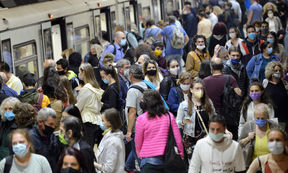Defence of doctoral thesis in the field of systems and operations research, M.Sc. Anton von Schantz

When
Where
Event language(s)
Several crowd disasters have received worldwide media attention. In summer 2010, in Germany, the Duisburg Love Parade festival gathered around 1 million attendees. The event ended in a tragedy when in the narrow tunnel leading to the festival area, 21 people were trampled to death, and hundreds got injured. More recently, in April 2021, in a religious gathering in Israel, over 40 people died due to dangerous crowd pressures. The media often speaks about panicking crowd as a cause to these disasters. But what do we actually mean when we speak about escape panic?
Since the 50s, social psychologists have been unanimous that escape panic results from the rational behavior of crowd members. Dwindling resources make people behave impatiently. When there is a hurry to escape a dangerous situation, people start to push and overtake their way out. In the early 2000s, physicists showed that the crowd movement dynamics could rather realistically be modeled by accounting for the different forces affecting an individual. Nowadays, the research objective is to develop methods that can prevent crowd disasters in different events and buildings, like in train stations and airport terminals.
This dissertation offers several practical tools for the numerical simulation and optimization of socio-dynamical features of crowd congestion. The individuals play an evolutionary congestion game, where they fight for their escape. When time is running out in a tight space, escape panic emerges from the rational behavior of crowd members. Then physical forces take over, and a crowd disaster is ready. We simulate the situation in a virtual world that we implement on a supercomputer. We show that the local behavior of people causes dangerous human arches to form and break down and the crowd to move in bursts. The simulation results are validated with data from evacuation experiments done in our research group.
We also study the minimum time evacuation problem using rescue guides, i.e., how should rescue guides evacuate a crowd from a building in minimum time? New mathematical models and algorithms are developed to solve the problem. Additionally, worst-case scenarios are accounted for with a risk measure. In the future, crowd disasters could be prevented by combining these methods with sensor data to give predictions and optimal recommendations to the rescue personnel.
Opponent is Professor Armin Seyfried, University of Wuppertal, Germany
Custos is Professor Harri Ehtamo, Aalto University School of Science, Department of Mathematics and Systems Analysis
Contact information of the doctoral student: anton.von.schantz@aalto.fi, +358504346501
The public defence will be organised via Zoom. Link to the event
The doctoral thesis is publicly displayed 10 days before the defence in the publication archive Aaltodoc of Aalto University.






